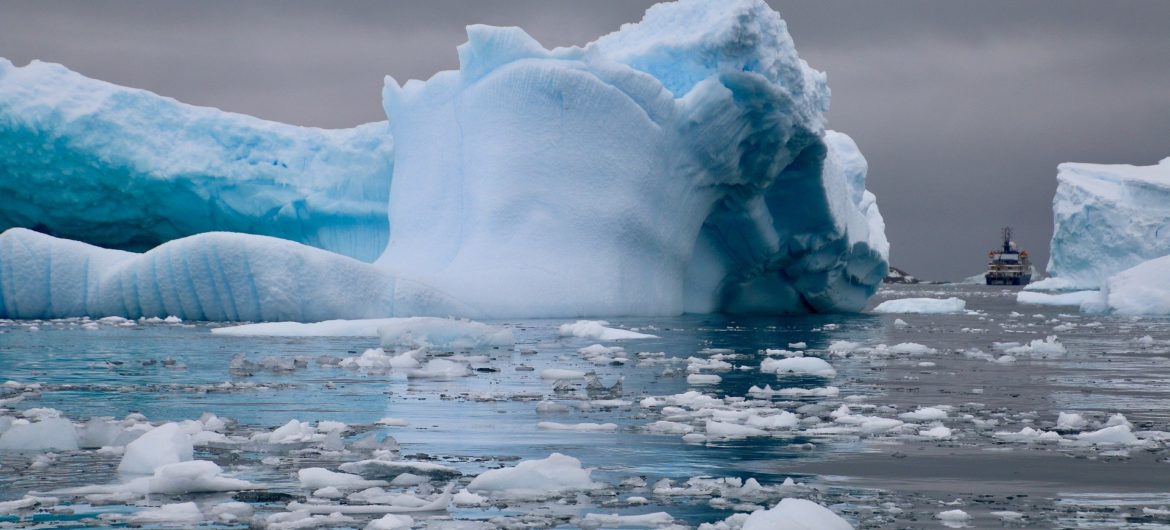By Amy Holden
At the start of February, scientists discovered two of the highest temperatures ever recorded on the Antarctic peninsula and a neighbouring island- 18.3C and 20.75C respectively. These readings, although stressed by scientists to not be part of a long-term set, highlight the ever-growing issue of global warming- while the effects are magnified in Antarctica, they will span the world.
Over the last 50 years, the temperatures in Antarctica have increased by nearly 3C, with around 87% of glaciers retreating, as a direct result of global warming. To gain perspective on the issue, it is important to note that 90% of the world’s freshwater is held in Antarctica, emphasising just how intimidating these new readings can appear. Looking at a single glacier, aptly titled the ‘Doomsday Glacier’, the Thwaites Glacier alone is the size of Great Britain, and has enough volume to increase sea levels by more than 1/2m should it melt. Considering that parts of London could be underwater with a 2m increase, the melting of the glaciers is an issue that should be well-documented to prevent further melting. Closer to home, an increase in temperatures of 4C would see much of Sussex underwater, including Brighton seafront and much of places such as Eastbourne and Newhaven.
According to the BBC, there are a number of scenarios that can occur in the future regarding this issue: the best-case scenario is that action is taken to reduce greenhouse gas emissions, which would only see a 2C increase in July temperatures 1900-2100. The worst however, is a 6C increase by 2100, should greenhouse gas emissions continue at their current rate.
It is not only the rise in sea levels that can occur as a result of global warming however, as it will also change many weather patterns both in the UK and globally. For example, at a national level, it is believed by the Met Office that heavy rain spells will continue to increase, as well as warm spells. These can mean that changes to agriculture will have to occur (crop types may have to change and water may become scarcer), as well as heatwaves impacting certain groups, such as the elderly. Globally, these will also be the impacts however, in some countries, such as Bangladesh, the increase in floods will put communities at even greater risk, and some countries may experience heat at temperatures unsafe for humans. The impacts of climate change are ‘stress multipliers’, as they increase the severity of existing issues, making them harder to resolve.
However, it is not all lost yet. Climate change is at the front of the minds of many, and many countries are starting to act. EU countries for example, have targets to reduce their emissions by 40% by 2030, and if it fully enacts its current policies, it could be set to exceed this. The UK has a somewhat unique position due to Brexit, meaning that its place in the EU Emission Trading Scheme is questioned however, 1990-2018 their emissions decreased by 44%. Across the Atlantic however, the US could experience an increase in emissions the size of California, if Trump continues with his plans to silence climate science and relax vehicle efficiency standards (to name but a few).
Antarctica really is one of the best places in the world to judge climate change, given its landscape and lack of disturbance. By consequence, research is being done in this area in the field of climate change to deeply probe the impacts. One example of this is the International Thwaites Glacier Collaboration, a $50 million UK-US project, the biggest and most complex science project in the history of Antarctica. While the impacts can be seen across the world, it is here that the impacts are explicit, and soon it is believed we may be having iceless summers if current trends continue, creating secondary impacts on factors including wildlife and biodiversity across the world.
The distance to Antarctica from us means that it is easy to ignore the issues happening there however, similar to how no one country owns Antarctica, no one country can fix the climate change issue. It is a global issue that doesn’t discriminate in its impacts, and one that, should the impacts go too far, may be hard to return from (if not impossible). Research highlights that we are reaching the peak of the issue, and therefore, it is important solutions and preventative methods are being put in place now, rather than simply dealing with the impacts as and when they arise.
Image credit: SarahNic on Pixabay





